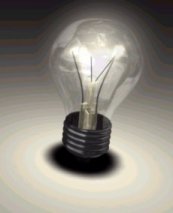Saturday, June 17, 2006
The inventing machine
 On one side, there are the genetic algorithms, whose spiritual father is John Holland. In 1980, he implemented its studies by applying it to the optimization of the capacities in gas pipelines: he gives to the system-computer the characteristics of the current solution and explained how to measure the performances. The system randomly modifies various parameters (pressure, flow, etc) and just looks at the result. It does it many times and keeps only the solutions which generated an improvement of the capacity, and throws the others. Then, it combines all these improvements, looks at the results, throws, recombines, etc. until obtaining the best result: the required optimization.
On one side, there are the genetic algorithms, whose spiritual father is John Holland. In 1980, he implemented its studies by applying it to the optimization of the capacities in gas pipelines: he gives to the system-computer the characteristics of the current solution and explained how to measure the performances. The system randomly modifies various parameters (pressure, flow, etc) and just looks at the result. It does it many times and keeps only the solutions which generated an improvement of the capacity, and throws the others. Then, it combines all these improvements, looks at the results, throws, recombines, etc. until obtaining the best result: the required optimization.Other the other side, there is the artificial intelligence (AI): the main goal is to model the human cognitive functions, such language or recognition of objects or situations. The outlets are less practical, but the researchers in AI are extremely optimistic (a subject of conference, seriously discussed, was “the AI for president? ”).
Anyway, the idea of John Koza (and that's our point, finally), is to mix these two fields of research, with their respective advantages. But what is annoying here, that's the incapacity to get real NEW solutions to the problems. In 1987, he thinks to create a genetic algorithm that modifies itself, rather than modifying its parameters!
His idea becomes real in 1995: John sees his computer drawing an electric circuit. Not being a specialist, he shows the plan to a colleague who informs him that it's a low-pass filter, used for amplifiers. The fundamental difference, compared to the pipelines of his teacher Holland, is that the algorithm did not start from an existing basic circuit, but just from a set of components (resistances, capacities,…). His algorithm became inventive and creative! By learning that a patent had been set a few years earlier on this type of filter, John concludes it's possible to let his computer generate patentable inventions.
This is his current activity right now, using a network of one thousand computers running that kind of algorithm. The last example is for the NASA, for the mission Space Technology 5: a colleague of John Koza integrated the basic specifications of an antenna and let the program work on it. Hundreds of iterations later, an error seemed to appear: the result looks like a twisted trombone. In any chapter of any document, nobody speaks about a twisted antenna. Once in the test-room, it appeared that this antenna was the perfect solution for the NASA, integrating all the mission's constraints!
Anyway, the idea of John Koza (and that's our point, finally), is to mix these two fields of research, with their respective advantages. But what is annoying here, that's the incapacity to get real NEW solutions to the problems. In 1987, he thinks to create a genetic algorithm that modifies itself, rather than modifying its parameters!
His idea becomes real in 1995: John sees his computer drawing an electric circuit. Not being a specialist, he shows the plan to a colleague who informs him that it's a low-pass filter, used for amplifiers. The fundamental difference, compared to the pipelines of his teacher Holland, is that the algorithm did not start from an existing basic circuit, but just from a set of components (resistances, capacities,…). His algorithm became inventive and creative! By learning that a patent had been set a few years earlier on this type of filter, John concludes it's possible to let his computer generate patentable inventions.
This is his current activity right now, using a network of one thousand computers running that kind of algorithm. The last example is for the NASA, for the mission Space Technology 5: a colleague of John Koza integrated the basic specifications of an antenna and let the program work on it. Hundreds of iterations later, an error seemed to appear: the result looks like a twisted trombone. In any chapter of any document, nobody speaks about a twisted antenna. Once in the test-room, it appeared that this antenna was the perfect solution for the NASA, integrating all the mission's constraints!
source : Popular Science, April.
Labels: exploits
archives >> April - March - February - January -December - November - October - September - August - July - June - May
Powered by Stuff-a-Blog
une page au hasard
